How Elon Musk and SpaceX plan to take humanity to Mars under $140k per head
In 2006, Elon Musk wrote a post titled 'The Secret Tesla Motors Master Plan' where he outlined his long-term intentions to make a mass-market electric car that was environmentally friendly. Close to a decade later, Musk is close to realising this dream with Tesla Motor's successes so far and the scheduled launch of the Tesla Model 3 in 2017. In July 2016, Musk unveiled 'Master Plan, Part Deux’ where he outlined his vision to make safer self-driving vehicles.
Raising the bar many notches higher on September 27 2016, Musk, who is also the founder and CEO of SpaceX, took the stage at the International Astronautical Congress (IAC) 2016 in Guadalajara to unveil his grandest plan yet— 'Making Life Multi-Planetary'. Here are some of the highlights from the session:
Mars the only viable option?
Musk opened his talk by answering the existential question of 'Why go anywhere?' and noted that the long-term survival of our species is in jeopardy if we don't explore other worlds in our solar system. He then noted that because of its similarity and proximity to Earth, Mars was the only viable option for us to start space exploration.
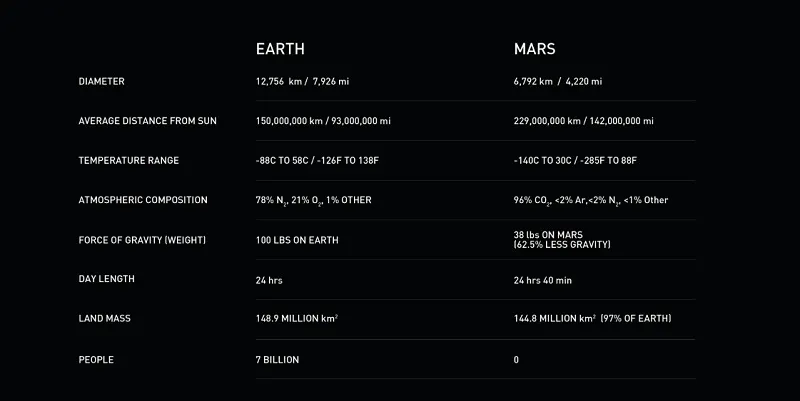
Musk noted that currently people who want to and can afford to go to Mars cannot because there is no real solution at the moment. Utilising traditional means, Musk estimates that the cost will go down to $10 billion per person for one trip. So his goal is to make advances in technology and make the trip affordable and make the cost of the trip equivalent to the median cost of a home in USA.
The four big barriers
The four technical challenges standing between the Earth and Mars, according to Musk and SpaceX are:
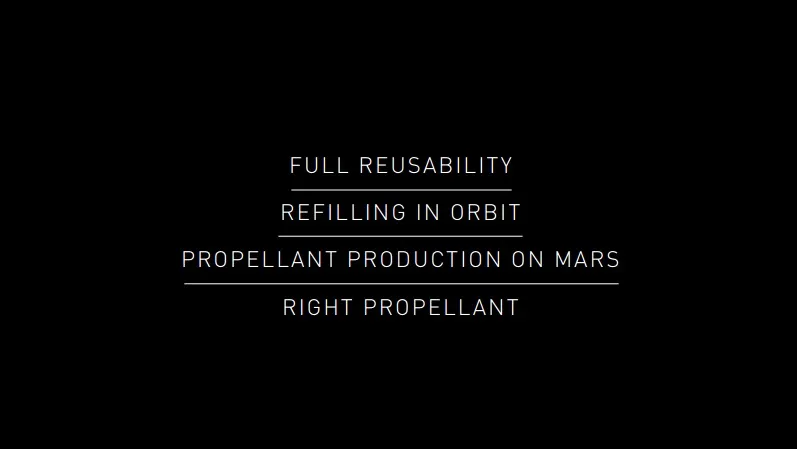
1. Full reusability of rockets: In 2015 Musk had noted, "If one can figure out how to effectively reuse rockets just like airplanes, the cost of access to space will be reduced by as much as a factor of a hundred. A fully reusable vehicle has never been done before. That really is the fundamental breakthrough needed to revolutionise access to space.”
2. Refiling in orbit is advantageous as one would not require a three-stage vehicle which increases cost by 5–10x. Spreading the required lift capacity across multiple launches substantially reduces development costs and compresses schedule.
3. The right propellant? Based on five factors considered (image below), Musk and SpaceX believe that deep cryo- methalox would be the best choice as propellant.
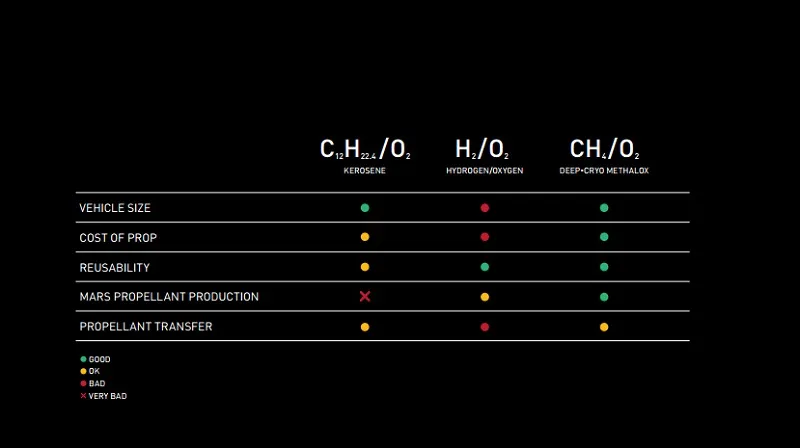
4. Propellant farm on Mars: Carrying return propellant would require approximately five times as much mass departing Earth, hence the goal would be to leverage resources on Mars to build a propellant farm to bring down cost. Here is schematic of the proposed plans for the propellant farm:
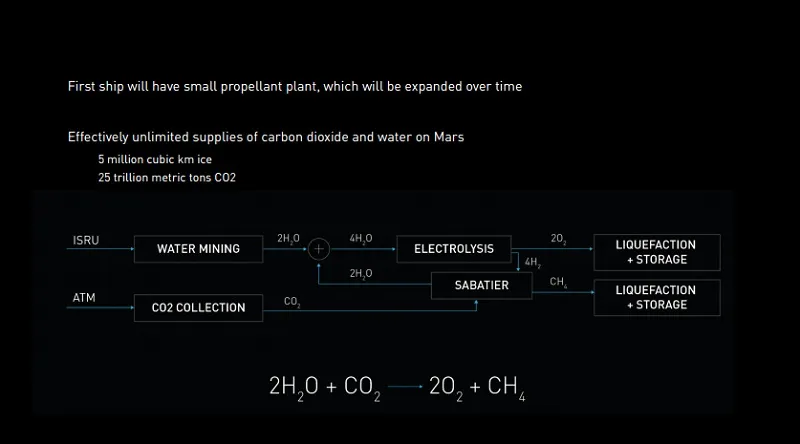
The Interplanetary Transport System
Musk noted that the goal is to get 100 people, and eventually more, on each trip. He also shared a four-minute simulation of how the trip to Mars would likely occur in SpaceX's Interplanetary Transport System. As a nod to The Hitchhiker's Guide to the Galaxy, Musk noted,
The first ship that goes to Mars, my current favourite(name) for it is Heart of Gold.
Musk also shared a simplified version of the system architecture for the proposed spaceship and expects it to last for 1,000 uses per booster:
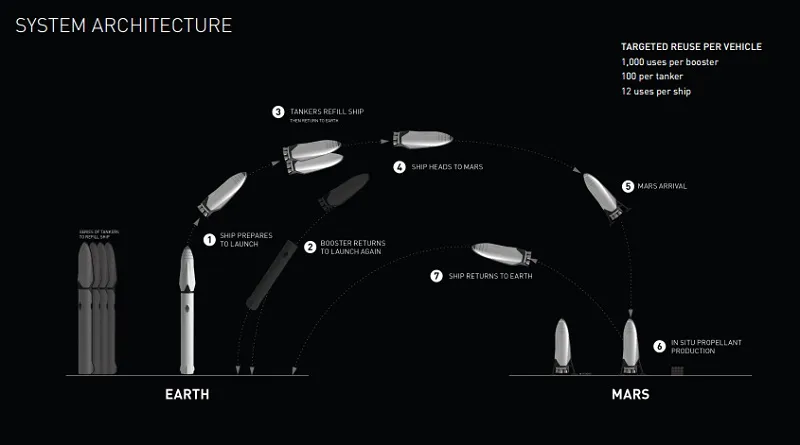
Musk then went into details about the raptor engine, rocket booster, and other technical specifications of the interplanetary spaceship. He also noted that the demonstration video was developed keeping in mind a lot of the technical considerations and was hence a realistic depiction of how SpaceX intends the flight to occur.
Finance options
If all goes according to plan, Musk estimates that the cost per person could be around $140,000 and eventually go down to $100,000, which would put it within the reach of the mass market.
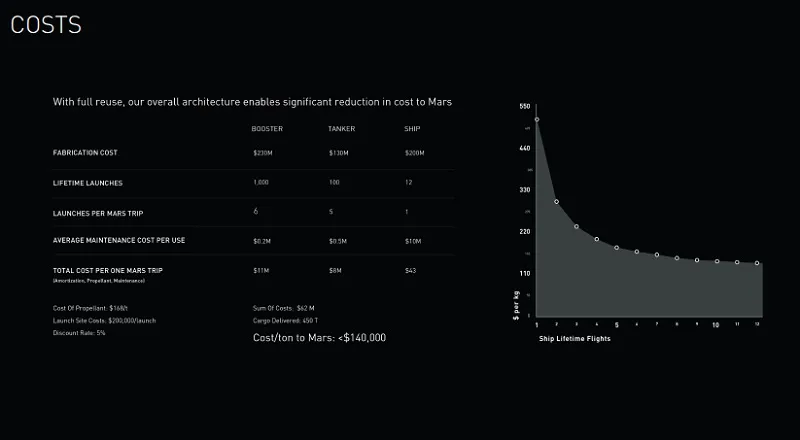
But bringing down the costs is going to be a challenge and SpaceX aims to rely on the success of their future missions to partly finance the expenses. Musk also noted that he would be investing all his personal wealth into this initiative as this was his life's goal. He then included a cheeky slide about all the possible sources of funding SpaceX plans to explore:
Timelines and future plans
Based on Musk's calculations and estimates, we could likely see the first flights to the red planet in the mid-2020s, after SpaceX completes orbital and booster testing phases. Musk also took the audience through a quick timeline of SpaceX's progress from 2002 to 2016 and also made a special mention for NASA, noting that he is their biggest fan for the faith and belief that they have shown in him and SpaceX.

Musk noted that though they have four main objectives for 'Mission Mars', the long-term goal is to develop capabilities beyond Mars and make it possible to explore other planets in our solar system, finally setting sights on interstellar travel.
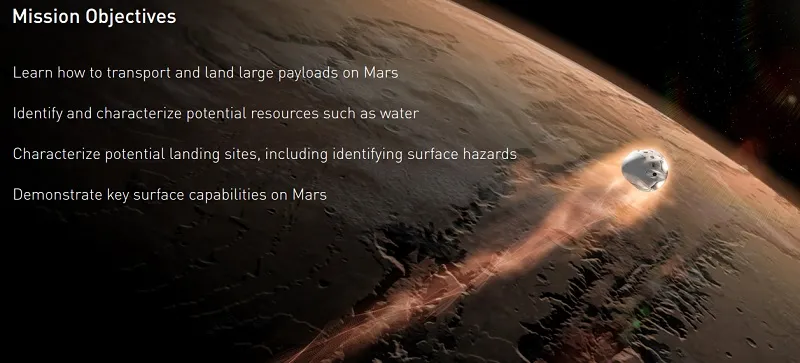
You can watch a replay of the entire presentation here- http://www.spacex.com/mars
All image credits- SpaceX







